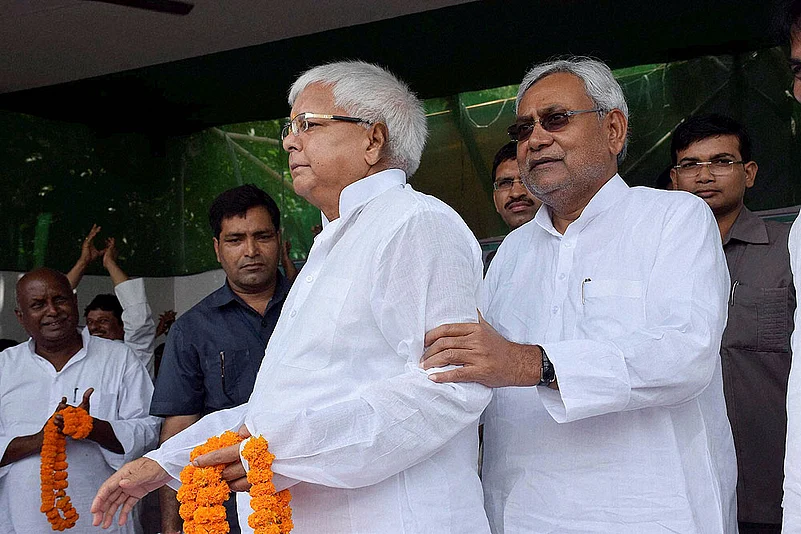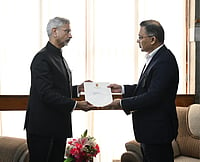The media is in the grip of the unfolding drama in Bihar. Rarely has the electronic and print media been so exercised about the outcome of what after all is a state election, no doubt in one of our largest ones. It is an infirmity in the functioning of our parliamentary system that state elections increasingly detract the central government from national governance issues. A generic rectification needs wider consensus and synchronisation of election cycles. I say this because hardly will the Bihar elections be over than the exercise begins in five states—West Bengal, Tamil Nadu, Assam, Kerala and Pondicherry—in March/April.
But why is Bihar so special?
- Its conjunction and configuration. Coming as it does after the setback for the BJP in Delhi, people view it as yet another episode in assessing the persistence of Modi’s appeal in rural India. If, as opinion polls suggest, the NDA does well in Bihar, it will be a decisive reaffirmation of Modi’s leadership, his style of governance and support for the government’s social and economic agenda. Bihar has a large rural population, and gauging the mood of rural India has wider significance.
- Bihar, with a population of 115 million, has 42 members in the Lok Sabha and 16 in the Rajya Sabha even after the partition of Jharkhand. Their large presence in both houses of Parliament has a significant influence in shaping national policies.
- Important legislations in Parliament, particularly economic legislations like the gst, are languishing for approval in the upper house. The obstructionist policies of the Congress and some other parties hurt India’s long-term economic growth. If the NDA does well in Bihar, there is every prospect that the Congress reaches appropriate conclusions on the prevalent mood of the people. The winter session of Parliament will have a reasonable prospect of getting back to normal legislative business. A setback for BJP could strengthen their obstinacies and obduracies, hurting the growth agenda.
Nitish Kumar is banking on his development record and significant improvement achieved during the first seven years in office. There is evidence to suggest that there has really been such improvement since the growth rate went up from 11.03 per cent between the period 2004-05 and 2008-09 to 15.05 per cent during 2012-13. However, given his partnership with Laloo Prasad Yadav and the people who are believed to be responsible for governance paralysis in Bihar, pejoratively described as ‘jungle raj’, he is now scarcely able to carry conviction and credibility about the development programme.

Photograph by AFP (From Outlook Issue 26 October 2015)
Can he implement ‘Nitish nishchay’ in partnership with RJD?
Nitish understands all this very well, being a micro-manager of men and matters, something that has earned him the sobriquet of being a ‘bureaucrat’s bureaucrat’. Having broken off with the BJP, he had little or no option but to engage in this untenable alliance. His own preferred model may have been an alliance with the Congress.
So what are the key issues which are going to play out in this ongoing electoral drama?
- The ongoing debate on identity versus development politics has overlooked a very critical factor, namely, the changing demographic structure of the state. Youth form the largest section among the electorate in Bihar today. The ratio of electors in the 18-19 age group witnessed a marked increase from 0.64 to 2.74 as per the draft roll published on January 18, 2014. Traditionally, Bihar’s development performance has lagged behind most other states, giving it the lead role in the uncomplimentary league of bimaru states. However, Bihar’s youth now recognise the state’s crucial need for development. They are aspiring for a better quality of life, improved infrastructure facilities and improved economic, political and work environment.
- Caste and sub-caste components have historically played a significant role in state elections. However, a recent opinion poll by News24 suggests that this approach to electoral calculus may be quite naive. According to the poll, 57 per cent of the people said that the caste factor will not play an important role in the upcoming Bihar elections. Further, over 50 per cent of the respondents believe that the traditional Muslim-Yadav (M-Y) combination will not affect election outcomes in the state. Also, more than 40 per cent considered development, in addition to law and order, as a major factor in influencing their votes.
- Nitish Kumar’s development record. During the first five years of Nitish’s leadership, the socio-economic achievements of Bihar were noteworthy. There were visible improvements in physical and social infrastructure as well as in the development outcomes of the state. However, careful analysis reveals that his development record in the later stage, especially after the break-up of his alliance with the BJP, suffered a significant setback. While the growth rate declined from an average of 12 per cent during 2010-13 to below 10 per cent during 2013-14, the Net State Domestic Product growth too had declined to 8.3 per cent during 2014-15 from 13.7 per cent during 2010-11. However, his ‘grand alliance’ with the forces that his party itself had held responsible for Bihar’s economic stagnation leads one to question his credibility.
- As several committees in the past have identified, Bihar is much below national averages on many key development indicators. The Raghuram Rajan panel report on state backwardness (September 2013) ranks Bihar second in the list of 10 “least developed” states, Bihar ranks 21st in World Bank’s ranking (2015) of states for bringing in reforms to improve “ease of doing business”. These facts suggest that while development has trailed near the bottom of the pyramid, there’s a parallel effect on the private sector, which too has suffered noticeably. The special package, with a public outlay of Rs 1.25 lakh-crore for multi-sectoral projects, announced by Modi at Saharsa this year, reflects a broad-based and integrated development agenda to redress the endemic deficit on these development parameters. The development projects planned under the package will have multiple and far-reaching benefits for the state, like higher GDP growth, enhanced agricultural productivity, improved infrastructure facilities, increased private sector participation, skill development and employment generation.
- People having experienced improved life quality in a development-centric politics would opt for the overarching theme of development than identity politics. In the reprioritisation of electoral choices, development may subsume favourable caste-class chemistry. Modi’s repeated iterations that he is seeking the mandate on a development agenda have broad empathy.
- Based on the first, the ability of regional leaders to mechanically transfer votes to their preferred regional parties may have run its course. It is not axiomatic that Laloo can transfer his votes to Nitish and the other way round because enhanced voter consciousness increasingly seeks a wider benefit. The electoral psyche has also changed.
- As mentioned before, Modi represents the hopes and aspirations of the very young in the young Bihar. They remain enamoured with his development vision, recent initiatives and the Bihar agenda focusing on a Digital Bihar, improved infrastructure, better educational and health prospects.
It is, therefore, not surprising that the two rounds of surveys by Times Now and CVoter, while suggesting a close battle, have increasingly edged in favour of an NDA win. As Modi’s development agenda percolates deeper, the pendulum will very likely oscillate further in nda’s favour. On the broad theme of development versus identity politics, which is what this election represents, my bet is that development will trump the politics of identity. This is symptomatic not only of a changing Bihar but more so of a changing India.
(A former bureaucrat, N.K. Singh was a JD(U) Rajya Sabha MP from Bihar before he joined the BJP in 2014.)


























